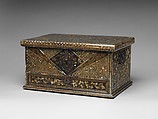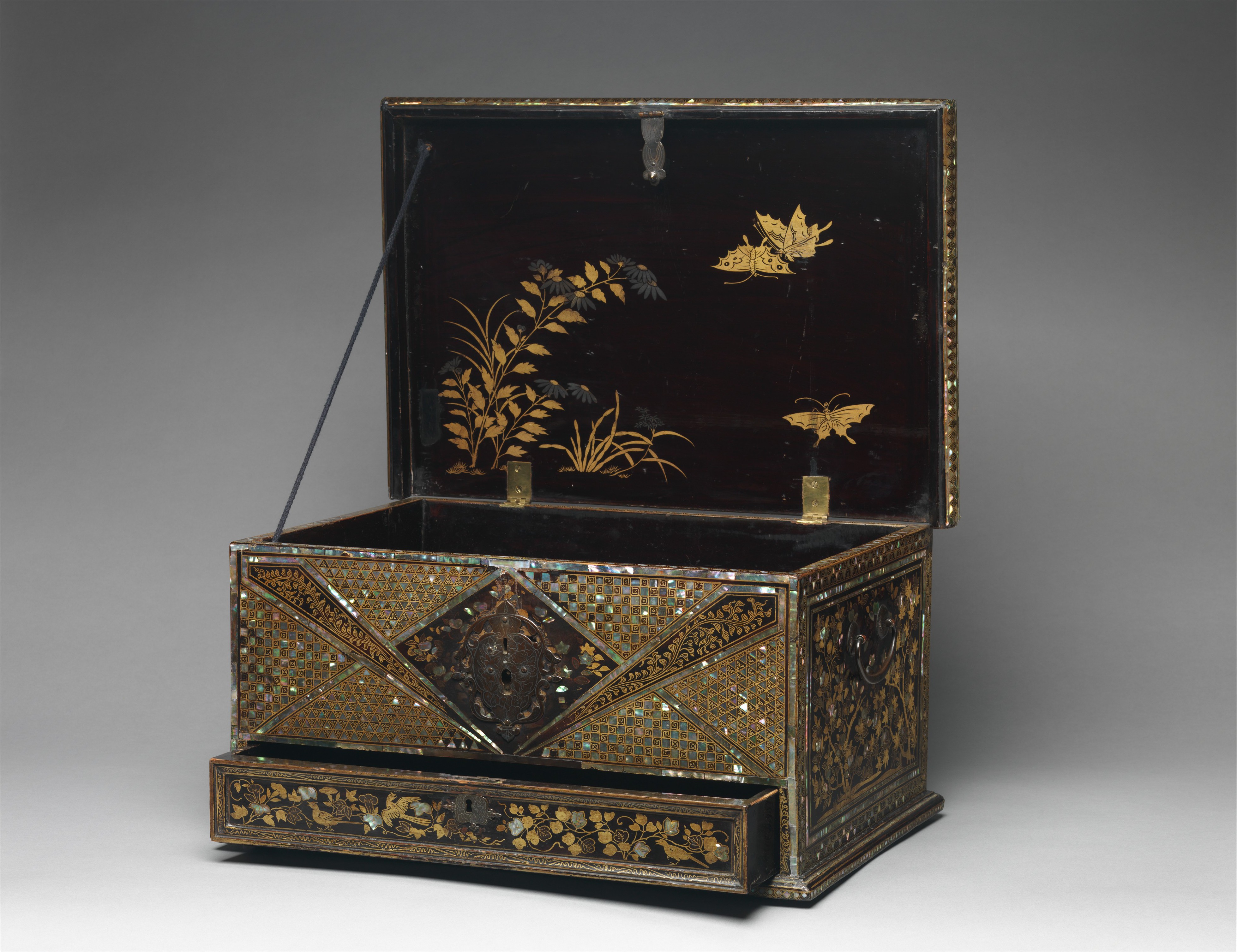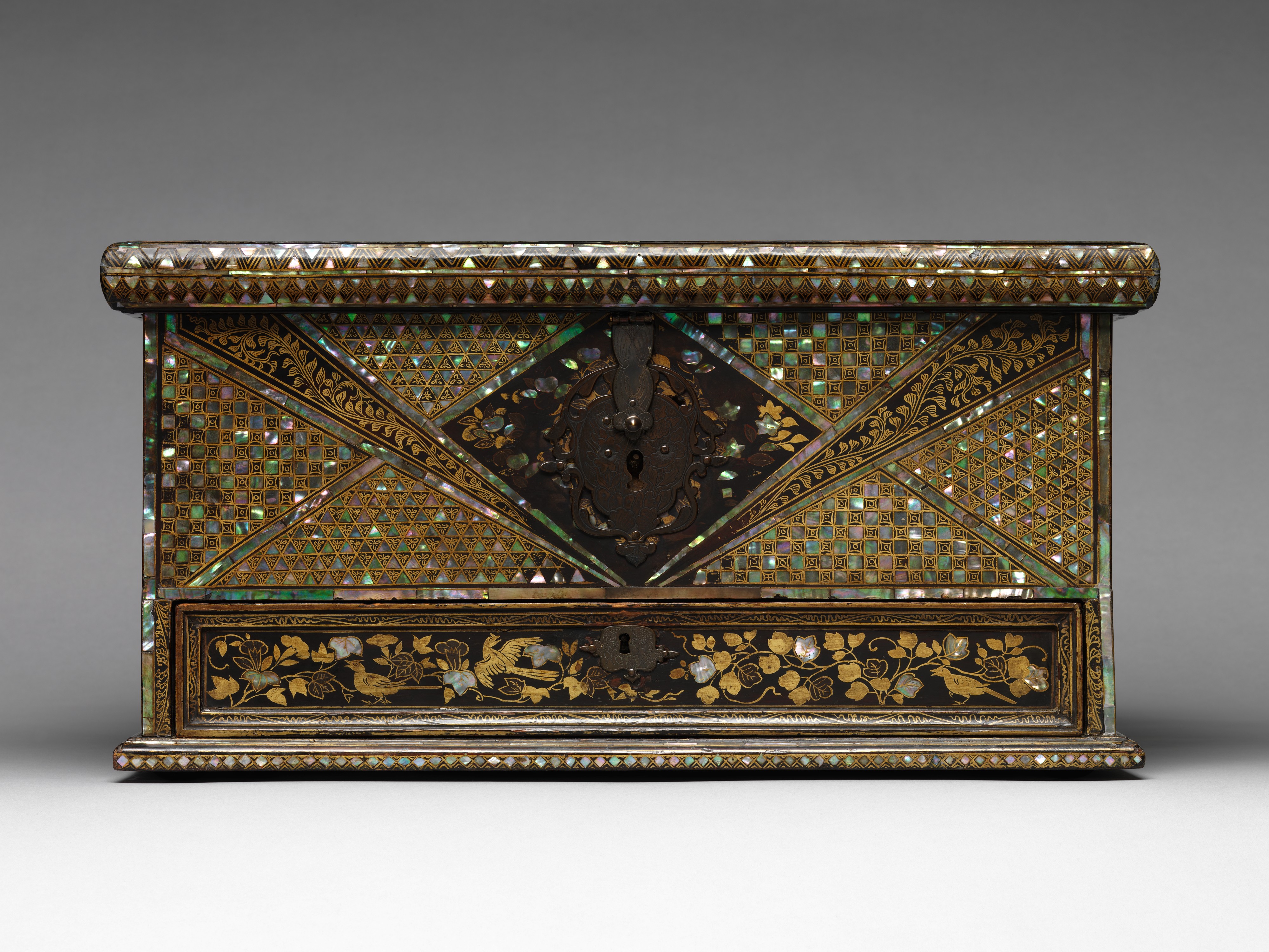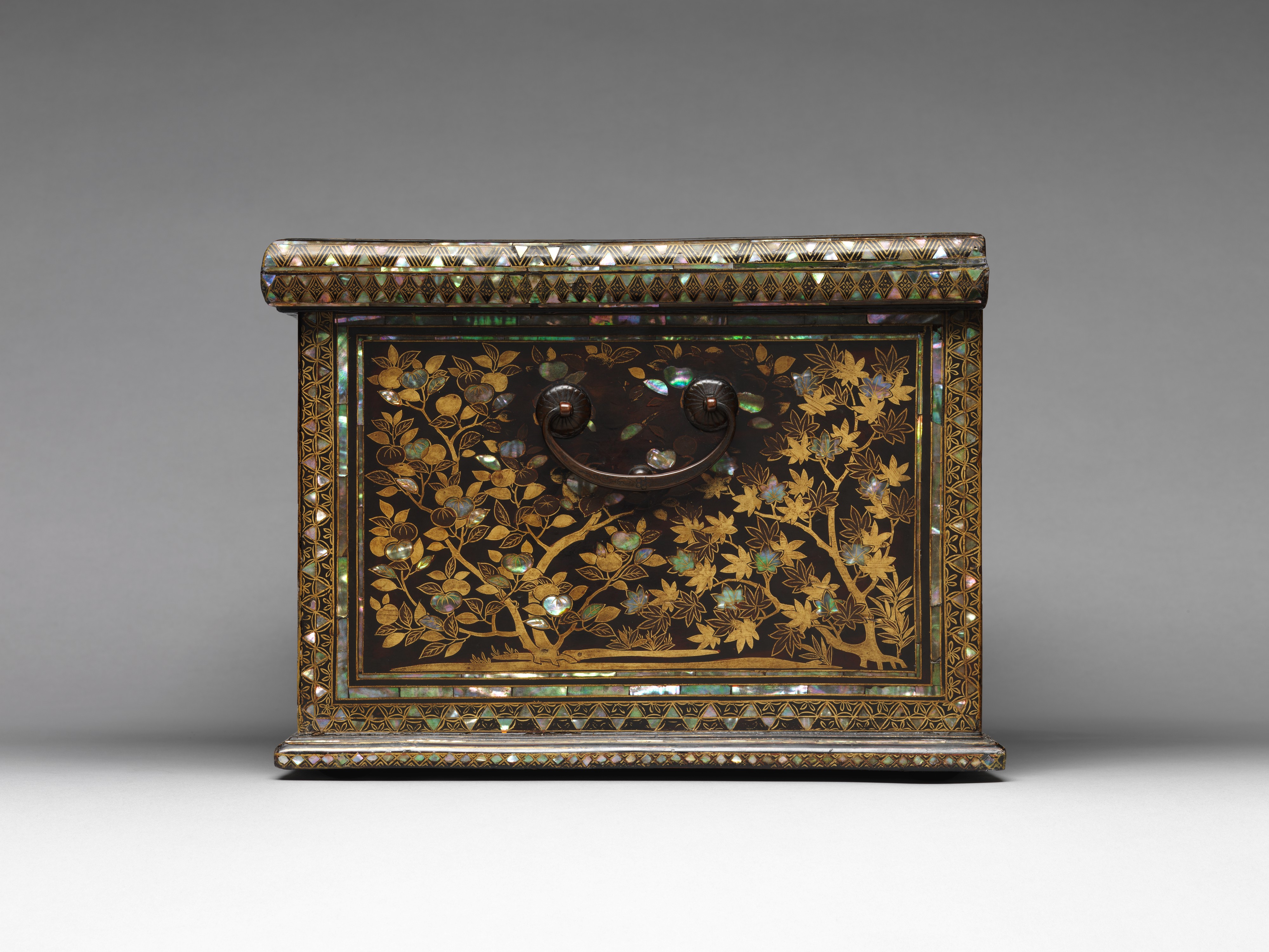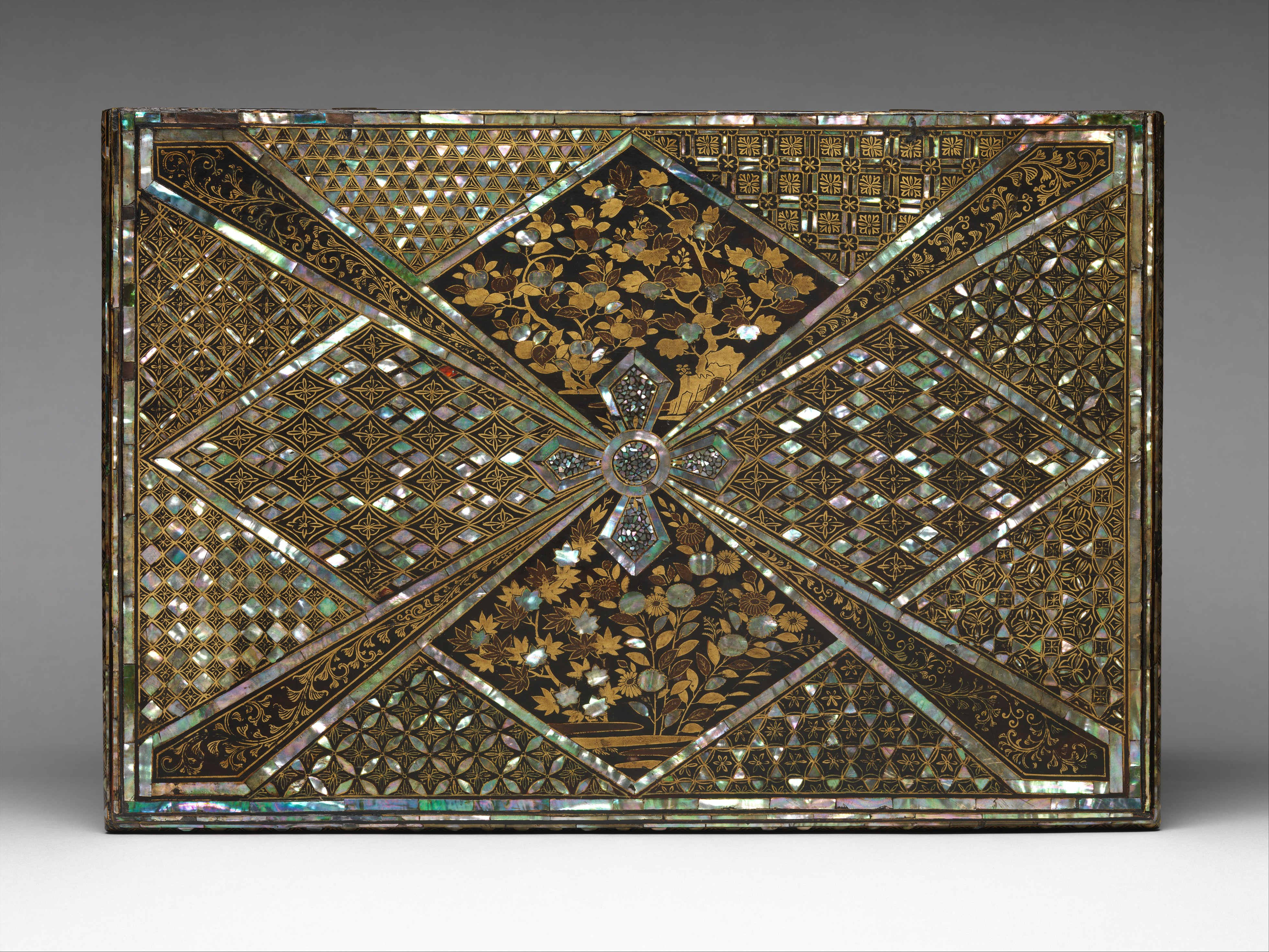Chest with a Single Drawer
Not on view
This spectacular chest belongs to a category of goods known as nanban (literally southern barbarians), produced for trade with Portugal and other European countries in the late sixteenth and early seventeenth centuries. While the shape of the chest derives from European traditions, the geometric patterns on the top and sides were most likely influenced by the Indian textiles that were widely traded at the time. On the other hand, the delicate floral scroll on the front is an East Asian motif, imported into Japan from China around the eighth century.
Due to rights restrictions, this image cannot be enlarged, viewed at full screen, or downloaded.
This artwork is meant to be viewed from right to left. Scroll left to view more.
